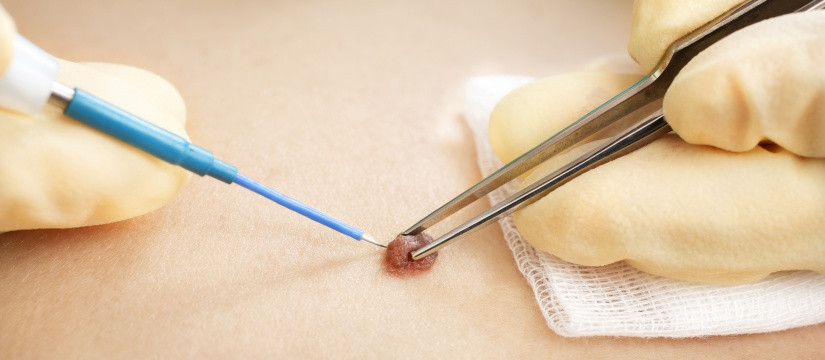Moles are common skin growths that can appear anywhere on the body. While most moles are harmless, some individuals may wish to have them removed for cosmetic reasons, discomfort, or because of concerns about skin cancer. Various methods exist for mole removal, each with its own advantages and considerations. This article provides an overview of the different techniques used to remove moles, helping you make an informed decision about the best approach for your situation.
Understanding Moles
Moles, or nevi, are typically small, dark brown spots on the skin, formed by clusters of pigmented cells called melanocytes. They can be flat or raised and vary in size and color. Most people have between 10 to 40 moles on their bodies, and while the majority are benign, it's crucial to monitor them for changes that could indicate skin cancer. The ABCDE rule (Asymmetry, Border, Color, Diameter, Evolving) can help you assess moles and determine if you should consult a dermatologist.
Reasons for Mole Removal
- Cosmetic concerns: Many individuals prefer to remove moles that are prominent or unattractive.
- Discomfort: Moles in areas prone to friction or irritation may cause discomfort or pain.
- Skin cancer risk: If a mole appears suspicious, removal and biopsy may be necessary to rule out cancer.
Common Methods for Mole Removal
1. Surgical Excision
Description: Surgical excision involves cutting out the mole along with a margin of healthy skin surrounding it. This method is typically performed under local anesthesia.
Advantages:
- Effective for large moles.
- Provides a full pathology report on the removed tissue, allowing for thorough examination.
Considerations:
- May result in a scar.
- Longer recovery time compared to other methods.
2. Surgical Shave
Description: In this method, the mole is shaved off at the skin's surface using a scalpel. This technique is often used for raised moles.
Advantages:
- Less invasive and quicker than excision.
- Minimal scarring since the mole is removed at the surface level.
Considerations:
- May not remove the entire mole, leading to potential regrowth.
- Some moles may not be suitable for this technique.
3. Laser Removal
Description: Laser treatment uses focused light beams to break down the pigment in the mole. This method is often used for flat moles.
Advantages:
- Minimally invasive with little to no scarring.
- Quick procedure, often completed in a single session.
Considerations:
- Not all moles can be treated effectively with lasers.
- Multiple sessions may be required for complete removal.
4. Cryotherapy
Description: Cryotherapy involves freezing the mole with liquid nitrogen, causing the cells to die and the mole to fall off over time.
Advantages:
- Quick and simple procedure.
- Minimal recovery time.
Considerations:
- May not be effective for all types of moles.
- Risk of skin discoloration or damage.
5. Electrosurgery
Description: Electrosurgery uses high-frequency electrical currents to cut through tissue or destroy the mole. This method is often used for smaller moles.
Advantages:
- Quick procedure with minimal bleeding.
- Reduced risk of infection.
Considerations:
- May not be suitable for larger moles.
- Can lead to scarring depending on the technique used.
Post-Removal Care
After mole removal, proper aftercare is essential to promote healing and minimize scarring:
- Keep the area clean: Gently wash the area with soap and water, then pat it dry.
- Apply ointment: Use an antibiotic ointment as directed to prevent infection.
- Avoid sun exposure: Protect the healing area from sun exposure with clothing or sunscreen to prevent discoloration.
- Follow your doctor’s instructions: Adhere to any specific aftercare guidelines provided by your healthcare provider.
When to Consult a Dermatologist
If you have a mole that changes in appearance, size, or color, or if it becomes itchy, painful, or bleeds, consult a dermatologist for evaluation. Regular skin checks and professional assessments can help ensure that any suspicious moles are addressed promptly.
Frequently Asked Questions (FAQ)
1. Is mole removal painful?
Most mole removal procedures are performed under local anesthesia, minimizing pain during the process. Some discomfort may occur afterward.
2. How long does recovery take?
Recovery time varies depending on the method used, but most individuals can resume normal activities within a few days.
3. Will there be a scar after mole removal?
Scarring depends on the removal method and the individual's skin type. Surgical excision may result in more noticeable scars compared to laser removal.
4. Can all moles be removed?
Most moles can be removed, but some may require specific techniques. A dermatologist can provide guidance based on individual circumstances.
5. How can I tell if a mole is suspicious?
Using the ABCDE rule can help assess moles. If you notice any concerning changes, consult a dermatologist.
6. Can I remove a mole at home?
It is not recommended to remove moles at home. Professional evaluation is crucial to ensure safety and effectiveness.
7. Are there any risks associated with mole removal?
As with any medical procedure, there are potential risks, including infection, scarring, and incomplete removal.
8. How much does mole removal cost?
Costs vary depending on the method used, location, and whether it’s performed in a dermatologist’s office or surgical center.
9. Will my insurance cover mole removal?
Insurance coverage depends on the reason for removal. If it’s for cosmetic purposes, it may not be covered. Check with your provider for specific details.
10. Can moles grow back after removal?
While most moles do not return after removal, some methods may not eliminate all of the mole cells, leading to possible regrowth.
By understanding the various methods of mole removal and their implications, you can make informed choices regarding your skin health. If you're considering mole removal, consult a qualified dermatologist to discuss your options and receive personalized advice tailored to your needs.
 Clinic Booking
Clinic Booking


 No Record
No Record